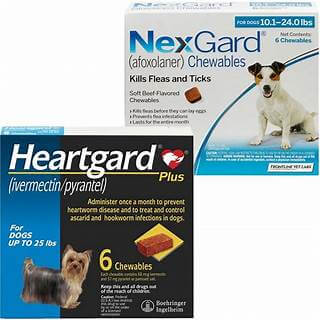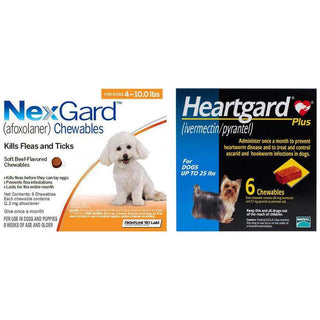Common Brand Names
Single Ingredient
Combined Ingredients
- Activyl Tick Plus Topical Solution for Dogs (with Permethrin)
Uses Of Indoxacarb
Indoxacarb is a wide-spectrum insecticide used to control fleas in cats and dogs. It also prevents flea allergy dermatitis.
Method Of Application
Indoxacarb comes in spot-on/topical solution. Only for external use.
- For pet flea and tick treatments, Indoxacarb is typically applied topically to the animal's skin. The product is usually in the form of a spot-on treatment or spray applied directly to the animal's coat.
It is important to follow the instructions on the product label for the specific application method and the appropriate dosage for the target pest. It is also important to take appropriate safety measures when applying Indoxacarb, such as wearing protective clothing and using the product in well-ventilated areas.
Dosage And Administration
Indoxacarb comes in feline and canine formulas, and dosage is according to body weight. Therefore, you should always weigh your pet before administering it and only use products on the animal they are intended for.
Always follow the instruction as indicated on the product package. Indoxacarb will provide maximum efficacy and help ensure that the product is applied in a position where your pet cannot lick it off.
Indoxacarb will kill existing fleas in 24 hours and provide residual protection against immature and adult fleas for at least four weeks in just one single dose. Therefore, do not apply Indoxacarb more than once a month.
Indoxacarb remains effective in dogs even after swimming or shampooing, but dogs should not be allowed to shampoo or swim for at least 48 hours after treatment.
Possible side effects
Indoxacarb is considered a relatively safe insecticide when used as directed, but like any chemical substance, it can cause side effects, especially if not used properly. Possible side effects of Indoxacarb include:
- Skin irritation: topical application of Indoxacarb can cause skin irritation in some animals, particularly dogs, and cats. This may manifest as redness, itching, or rash.
- Allergic reactions: some animals may have an allergic reaction to Indoxacarb, which can manifest as hives, swelling, or difficulty breathing.
- Gastrointestinal upset: ingesting Indoxacarb can cause nausea, vomiting, or diarrhea in animals.
- Nervous system effects: Ingesting high doses of Indoxacarb may cause effects on the nervous system, such as tremors, seizures, or loss of coordination.
- Environmental effects: Indoxacarb can be toxic to beneficial insects, fish and aquatic invertebrates, birds, and other non-target organisms if not used properly. It's essential to follow the instructions on the product label and consult with professionals to minimize the environmental impact.
If you suspect your pet or yourself have had an allergic reaction or other side effects after applying Indoxacarb, seek medical attention immediately.
Precautions
When using Indoxacarb, it is important to take the following precautions to minimize the risk of side effects and ensure the safe and effective use of the product:
- Follow the instructions on the product label: Be sure to read the product label carefully and follow the instructions for the appropriate dosage, method of application, and safety measures.
- Use personal protective equipment: When applying Indoxacarb, it is important to wear appropriate personal protective equipment, such as gloves, goggles, and a face mask to protect yourself from exposure.
- Keep the product out of reach of children and pets: Indoxacarb should be stored in a secure location, out of reach of children and pets, to prevent accidental ingestion or exposure.
- Please avoid contact with skin and eyes: Indoxacarb can cause skin irritation and eye damage, so it is important to avoid contact with the skin and eyes.
- Do not use near food or water: Indoxacarb should not be used near food or water sources to prevent contamination.
- Keep the product in original packaging: Do not transfer the product to other containers to prevent accidental misuse.
- Dispose of the product properly: The product should be disposed of properly, according to the instructions on the label, or by consulting with professionals.
- Consult with a veterinarian: If you are using Indoxacarb on a pet, it is important to consult with a veterinarian to ensure the safe and effective use of the product.
By following these precautions, you can reduce the risk of side effects and ensure Indoxacarb's safe and effective use.
Signs of toxicity
Signs of toxicity from Indoxacarb can vary depending on the level of exposure and the specific species affected. However, some common signs of indoxacarb toxicity include the following:
- Nervous system effects: Ingesting high doses of Indoxacarb may cause effects on the nervous system, such as tremors, seizures, or loss of coordination.
- Gastrointestinal effects: Ingesting Indoxacarb can cause nausea, vomiting, or diarrhea.
- Respiratory effects: Inhaling high concentrations of Indoxacarb can cause respiratory irritation, coughing, or difficulty breathing.
- Skin and eye irritation: Indoxacarb can cause skin and eye irritation, redness, itching, or rash.
- Allergic reactions: Some individuals may have an allergic reaction to Indoxacarb, which can manifest as hives, swelling, or difficulty breathing.
- Environmental effects: Indoxacarb can be toxic to beneficial insects, fish, aquatic invertebrates, birds, and other non-target organisms if not used properly.
If you suspect that you or your pet have been exposed to Indoxacarb and are experiencing any of these signs, seek medical attention immediately. Also, if you notice any unusual symptoms in your pet, such as lethargy, loss of appetite, or changes in behavior, contact your veterinarian immediately.
Storage
Store at room temperature away from foodstuffs and protect from moisture
Disclaimer
The information provided on this page is for normal reference only and is not intended to replace veterinary advice or packaging label. You should consult your vet first. Here may have included only some of the uses, side effects, brand names, or applications.






